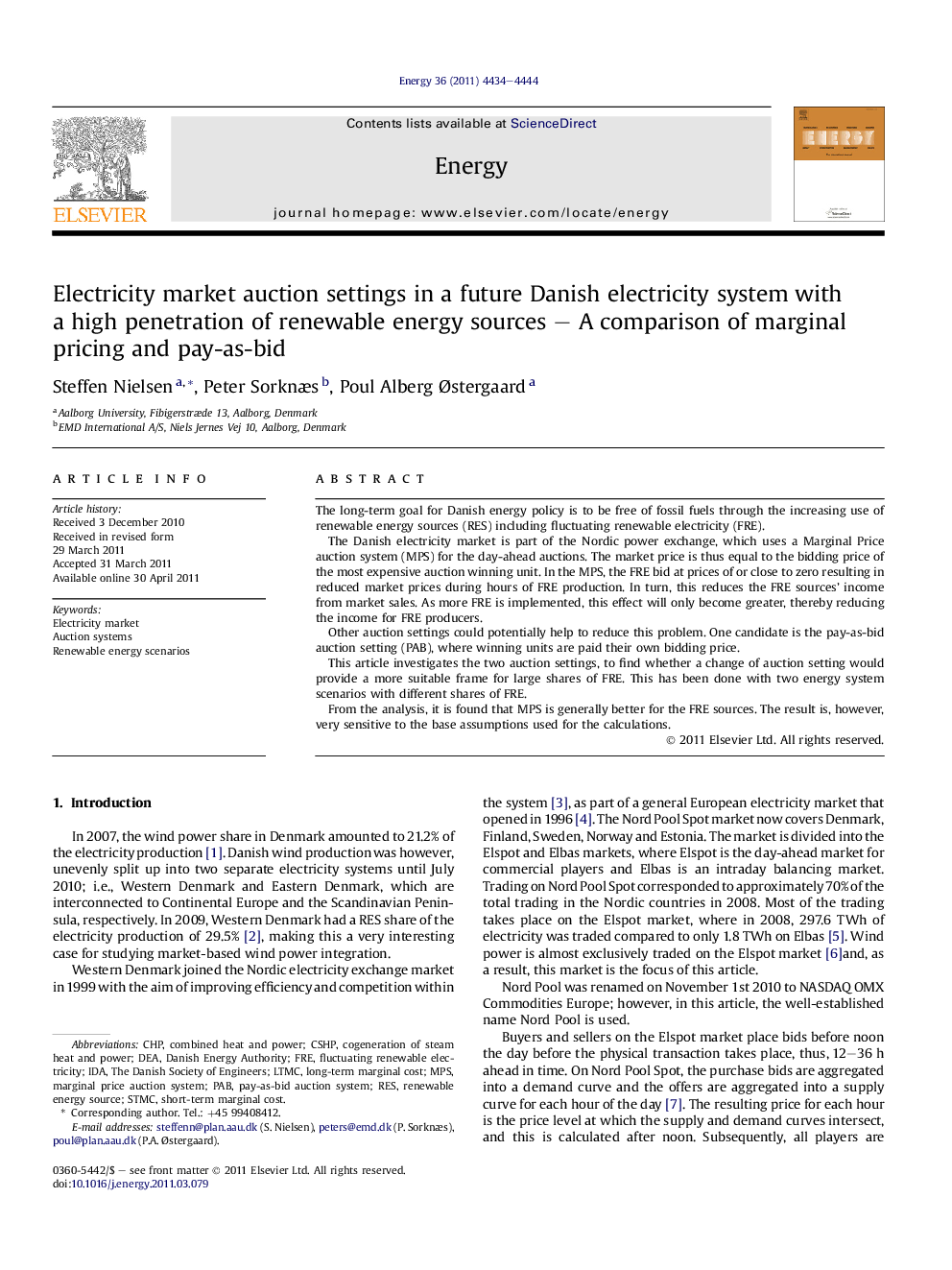| کد مقاله | کد نشریه | سال انتشار | مقاله انگلیسی | نسخه تمام متن |
|---|---|---|---|---|
| 1734204 | 1016153 | 2011 | 11 صفحه PDF | دانلود رایگان |

The long-term goal for Danish energy policy is to be free of fossil fuels through the increasing use of renewable energy sources (RES) including fluctuating renewable electricity (FRE).The Danish electricity market is part of the Nordic power exchange, which uses a Marginal Price auction system (MPS) for the day-ahead auctions. The market price is thus equal to the bidding price of the most expensive auction winning unit. In the MPS, the FRE bid at prices of or close to zero resulting in reduced market prices during hours of FRE production. In turn, this reduces the FRE sources’ income from market sales. As more FRE is implemented, this effect will only become greater, thereby reducing the income for FRE producers.Other auction settings could potentially help to reduce this problem. One candidate is the pay-as-bid auction setting (PAB), where winning units are paid their own bidding price.This article investigates the two auction settings, to find whether a change of auction setting would provide a more suitable frame for large shares of FRE. This has been done with two energy system scenarios with different shares of FRE.From the analysis, it is found that MPS is generally better for the FRE sources. The result is, however, very sensitive to the base assumptions used for the calculations.
► In this study two different auction settings for the Danish electricity market are compared.
► Two scenarios are used in the analyses, one representing the present system and one representing a future 100% renewable energy system.
► We find that marginal price auction system is most suitable for supporting fluctuating renewable energy in both scenarios.
► The results are very sensitive to the assumptions about bidding prices for each technology.
Journal: Energy - Volume 36, Issue 7, July 2011, Pages 4434–4444